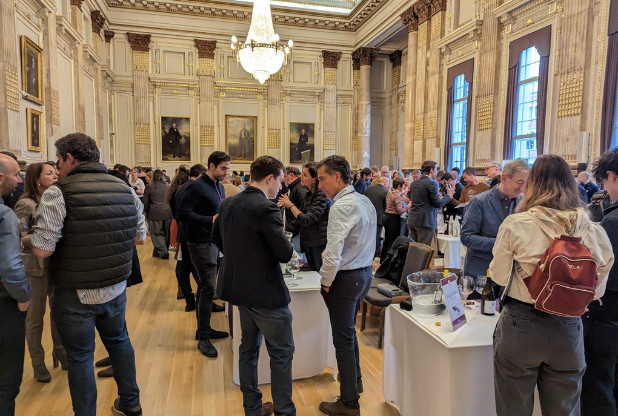
Tim Atkin MW: The UK trade doesn’t take Rioja seriously enough
Rarely does a trade tasting generate this level of excitement, but, Tim Atkin MW’s Best of Rioja trade and consumer tasting was teeming with life in Westminster this week. By Atkin’s admission, never has such a collection of wines been assembled in the UK from Spain’s flagship region.
Almost all of Rioja’s top bodegas were on show, indicating a welcome sense of camaraderie among the producers of the DOCa. The wines, which were personally selected by Atkin, were made up of first and second growths from Atkin’s annual Rioja report, plus a few rising stars for good measure.
Atkin sat down with Harpers to discuss the landmark tasting and what the future has in store for the region as a whole.
- Read more: La Rioja Alta reaches new heights
A Rioja tasting of this calibre has never occurred in the UK, so what’s changed, why now?
Two things. The quality of the wines, for a start. The second thing was my belief – shared by the producers who came to London – that the region does not, as a rule, promote its best wines in the UK. It takes a generic approach that mostly focuses on the biggest rather than the best brands. I got bored of waiting for the Consejo Regulador to put on a tasting like this – I suggested it to them three years ago – so in the end I decided to do it myself with the help of my Spanish brand manager, Marisa Velilla, and Clare Malec of Island Media.
If this tasting is to serve as a microcosm for Rioja, what might visitors learn about the region that they weren’t previously aware of?
In a word – diversity. Too many people think that the only wines Rioja produces are Crianzas, Reservas and Gran Reservas aged in American oak. The best of those wines are marvellous, but there are so many other styles being produced – red, white, sparkling and rosé. The majority of these are made as “Genérico” wines, where the rules about oak ageing are less strict.
What are the key trends in the region at the moment, are they on display here today?
Absolutely. I’d mention three things – diversity, a growing focus on individual vineyards – not just under the official Viñedos Singulares category, although that’s part of it – and what we could call terruño/terroir. And last but not least, the growing number of exceptional projects run by young winemakers and growers.
Is the onus on the producers or the suppliers/distributors to better promote and sell premium Rioja wine?
A bit of both, but the UK trade doesn’t take Rioja seriously enough. Look at the way they cover Bordeaux and Burgundy. Some merchants send dozens of people over there to look at the new harvest. Rioja doesn’t get the same attention, with honourable exceptions like Ben Llewelyn at Carte Blanche and Paul Shinnie at Alliance. People should be talking about the differences between San Vicente de la Sonsierra, Laguardia, Labastida and Elvillar, not how long a wine spends in oak barrels. I think the top sommeliers have a better idea of what’s going on in Rioja.
Low-priced Rioja is generally very drinkable, is this a positive or a negative for the overall perception of the region?
It’s both. Basic Rioja is much more pleasant than basic Chianti, claret or Australian Shiraz. But we’re so used to the cheap stuff that we’ve become addicted to it. And those wines – mostly made by co-ops and big companies – don’t do much for the region. Some are produced below cost, or very close to it, and there is insufficient return in all this for the region’s growers, who supply the grapes. The region doesn’t have enough young farmers and that’s a real headache for the future. In Rioja, you don’t have to trade up much to taste some of the best wines in the world.
What does the future hold for white Rioja, is this a category that could one day stand toe-to-toe with the flagship reds?
It’s already there in my opinion. Volumes are smaller – around 10% of what the region produces – but the quality and diversity of the best wines are phenomenal. The game changer has been that many of the top wines now come from vineyards that were specifically planted with white wine production in mind, not just taken from field-blended vineyards with red grapes. Many are at altitude, or in cooler regions, and that has given the wines new zip, elegance and focus.





